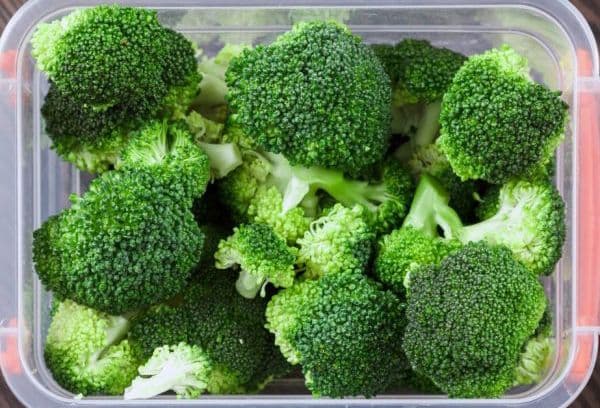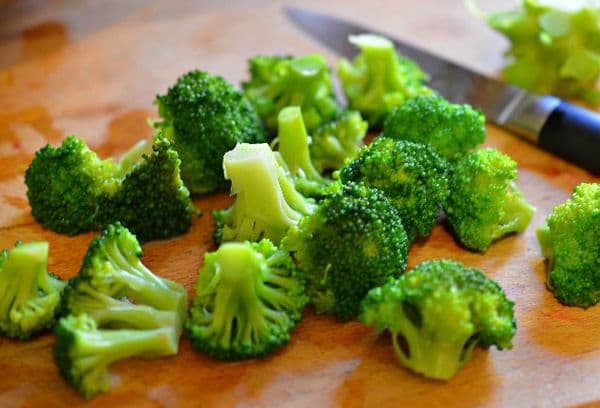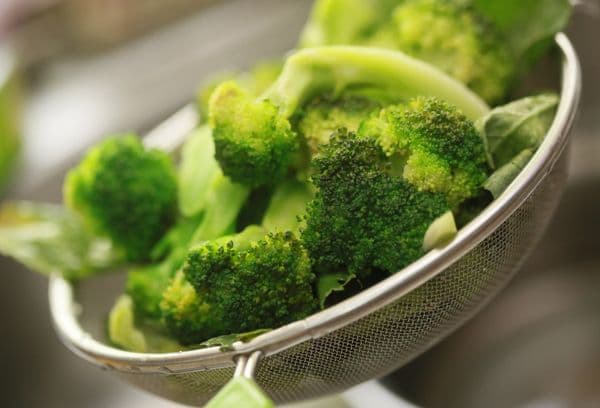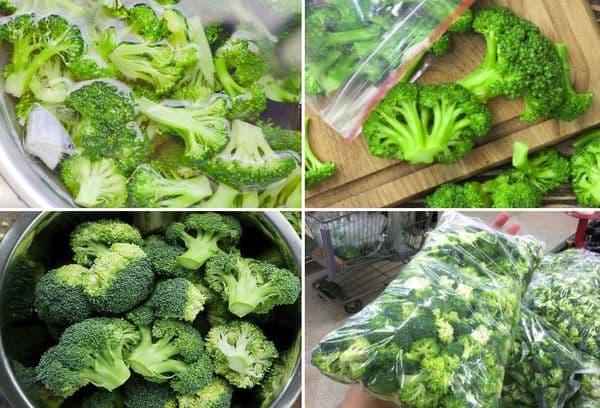How to freeze broccoli for the winter to preserve all the benefits and taste
Freezing broccoli for the winter is a common thing, but there are a few rules that will help preserve all the benefits, taste and shape of the unusual cabbage inflorescences.
Freezing Broccoli: Pros and Cons
Broccoli is sold in stores mainly frozen. This vegetable tolerates icing well. Many have never even seen fresh broccoli.

For broccoli, as for many types of vegetables, shock or quick freezing is preferable. Modern cameras offer this function; it is enough to set the temperature below the standard –18 °C.
There are many benefits to freezing broccoli:
- This healthy and low-calorie vegetable can be stored for up to 1 year.
- Cabbage retains its vitamins, taste, and is easy to prepare.
When stored in the freezer for a long time, the product somehow loses its beneficial properties, especially if it was accidentally defrosted and re-frozen, for example, the refrigerator was unplugged. If you plan to preserve your cabbage harvest for a long time, then take care of reliable household appliances.
Cabbage selection
It all starts with choosing the right samples. Rotten, immature and deformed pieces do not lie well. Take only this broccoli:
- Look for a fork that is elastic, not too small and not too large. The optimal diameter is 15-17 cm.
- The color of the broccoli should be a uniform dark green. No yellowed areas or dark spots - these are signs of overripe cabbage.
- Inspect the cabbage for pests - they are unnecessary in the preparation.
Advice
The magazine purity-en.htgetrid.com draws your attention: the healthiest broccoli is freshly picked from the garden. If you are growing this cabbage, then try to freeze it within 2-3 days after harvesting.
Preparation
Broccoli is divided into florets before freezing. Firstly, it is not convenient to store a whole head of cabbage, it will take up a lot of space, and secondly, the pieces will freeze faster, and this will allow you to preserve the maximum of vitamins and microelements.
To begin, disassemble the forks into pieces and rinse them thoroughly. The next step, which is not recommended to be skipped, is soaking in salt water. Salt is added to destroy insect larvae, which are not always visible to the naked eye. Prepare a solution of 1 liter of water and 1 tbsp. l. salt, pour it over the broccoli and leave for half an hour. All harmful creatures will float to the surface.
Advice
Soaking vegetables is also recommended to draw out excess nitric acid salts, which are better known as nitrates. If you bought a vegetable at the market, then keep it in water for 15 minutes to neutralize dangerous substances.
Be sure to rinse the soaked broccoli in clean water to remove any remaining salt.
Blanching
An optional but recommended procedure is blanching. Its essence is short-term scalding with boiling water or steam treatment. Why you need to blanch broccoli:
- This way the cabbage will not darken.
- More vitamins will be retained.
- Blanched vegetables will cook much faster after defrosting.
- Harmful microorganisms are destroyed (they can also multiply in freezer conditions).
How to easily and simply blanch in boiling water:
- Heat water in a saucepan.
- Place broccoli in a sieve.
- When the water boils, dip the cabbage in it and hold for a couple of minutes, no more.
- Now take out the sieve and immediately place the vegetable under a stream of ice water.
Another option is steam treatment. For this you will need a double boiler. Steam the cabbage for no more than 7 minutes.
After any type of blanching, dry the inflorescences on a napkin or towel. Do not use dyeable newsprint. The cool setting of the hairdryer will help speed up drying. Now the cabbage is ready to freeze.
How to freeze: rules
How to properly freeze broccoli:
- For storage, use special freezer bags or plastic containers with lids. The material must be resistant to low temperatures and strong enough.
- Place cabbage in bags only in dry form.
- Distribute everything in portions so that you can use one piece at a time. Repeated freezing is harmful to any product, try to avoid this.
- You can first freeze the inflorescences and then put them in bags. This way they will definitely not stick to each other.
- The standard storage temperature is 18 degrees below zero. If possible, set the indicators below.
- The shelf life is 8-12 months, but it is better to eat the product quickly.
- Broccoli can be prepared as part of a vegetable mixture or with herbs. To do this, simply chop it finely.
Advice
In case of large volumes, attach stickers to bags and containers with the date the product was placed in the freezer. This way you won't forget to use everything before the expiration date.
Defrosting what to cook from frozen broccoli
Broccoli is eaten only after heat treatment, so in any case the product will go into a frying pan or into a pot of broth. Therefore, the vegetable does not require special defrosting - just throw it into the future dish. If cabbage sits at room temperature for too long, it will soften and spoil.
The easiest way to cook frozen broccoli is to boil it. Add inflorescences to vegetable and meat soup; the vegetable turns out very tasty in cheese soup; it goes well with fish and seafood.
Another way is to fry separately or as part of a vegetable stew.
Don't forget how delicious baked broccoli is. This method, along with steaming, is the most useful. Bake broccoli with cheese, as part of an omelet, with pasta and other vegetables. Shredded cabbage is suitable for pizza toppings.
Come up with your own ways to cook broccoli: the vegetable goes well with many types of foods. After shock freezing, cabbage quickly thaws and remains as tasty and nutritious as the fresh product.




